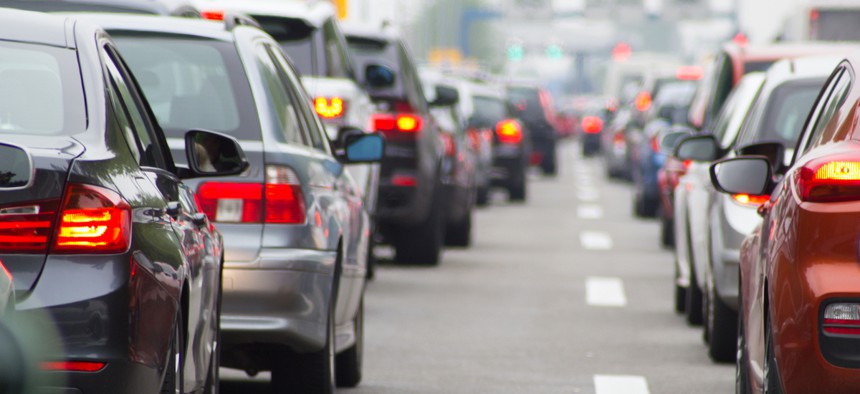Cities Aren't Doing Enough to Prepare for Autonomous Vehicles

Cities aren't doing enough to prepare for the future. ddsiq/Shutterstock
Self-driving vehicle technology may be coming, but most city leaders aren’t doing much to anticipate our robot-car future, a new study warns.
From the passenger’s perspective, ride-hailing services like Uber and Lyft offer a preview of what self-driving cars are supposed to deliver. You tap the button and summon a vehicle, and it takes you to your pre-entered destination. Yes, there’s a person in there, but now you can opt for a “quiet” ride, silencing the human who just happens to be sitting in the driver’s seat.
In New York City alone, more than than 620,000 daily trips are made like this. And, from what researchers have observed, the external impacts of this surge also hint at what the autonomous future has in store. In exchange for seamless, low-cost, car-based transport, cities across the U.S. are seeing congestion worsening, public transit ridership dipping, and more vehicle-miles wearing down roads—some of the worst-case stuff that futurists predict for when hailing a robo-car is even cheaper and easier.
So, given what they already know, city officials are surely taking steps to steer us away from an all-autonomous gridlocked hellscape—right? Alas, no. According to a new study published in the Journal of the American Planning Association, very few local leaders are working to anticipate the effects of self-driving cars. And though the arrival of these vehicles en masse could still be decades away, the authors write that now is a rare window of opportunity for cities to write policies that tackle both the unwanted effects of AVs as well as other big civic challenges.
To assess AV preparedness, the authors of the paper, MIT urban planning scholars Anne Hudson, Jinhua Zhao, and Yonah Freemark (who is also an occasional CityLab contributor) surveyed transportation and planning officials in 120 Americans cities (all with populations greater than 100,000 residents), and reviewed the published land use and transportation plans of the 25 largest among them.
Only a tiny fraction of survey respondents said that their town had a “clear plan” for autonomous vehicles, and just 36 percent of the largest cities have general plans that mention AVs. Even fewer, 24 percent, have issued separate strategies for maximizing the possible safety and congestion-easing benefits of self-driving cars.
One of the few cities that does have a plan for the future is Los Angeles: Its “Urban Mobility in a Digital Age” plan includes ideas about dedicated lanes for autonomous cars, municipal fleets of robotic buses and shuttles, and vehicle data-sharing relationships so that that city can manage traffic flow.
Why are so many lagging? Most respondents agreed that self-driving technology would require new regulations. But most also said they were waiting on higher levels of government to set the rules of the road first. Smaller cities with fewer resources, such as El Paso, Texas, and Jacksonville, Florida, were generally less prepared than larger, wealthier counterparts such as New York, Washington, D.C., and San Francisco. “We’re a poor city,” one survey respondent wrote. “Introduction of AVs would appear to need substantial funding, which we don’t have.”
And while most officials indicated that they felt positive about the arrival of AVs and their potential benefits—such as boosting safety and reducing congestion and pollution—more coastal, liberal-leaning cities (the same ones that have done more to prepare) tended to express greater concern about their ills.
The effects of autonomous vehicles will probably vary from place to place, just as ride-hailing has left different-sized marks on bigger and smaller towns. But the study also found that many cities share common goals—creating safer streets, supporting transit, and reducing congestion. While many officials seem to feel hamstrung in their ability to think ahead, the authors suggest that cities that do have the resources to strategize for the future share ideas and practices with others, to make sure the downsides of AVs don’t overshadow their positive effects. “Planning for AVs can be considered an extension of planning for transportation in general,” the authors write—it just might take some extra resources.
Laura Bliss is CityLab’s west coast bureau chief.
NEXT STORY: Planting a Habitat for Pollinators on City Streets





